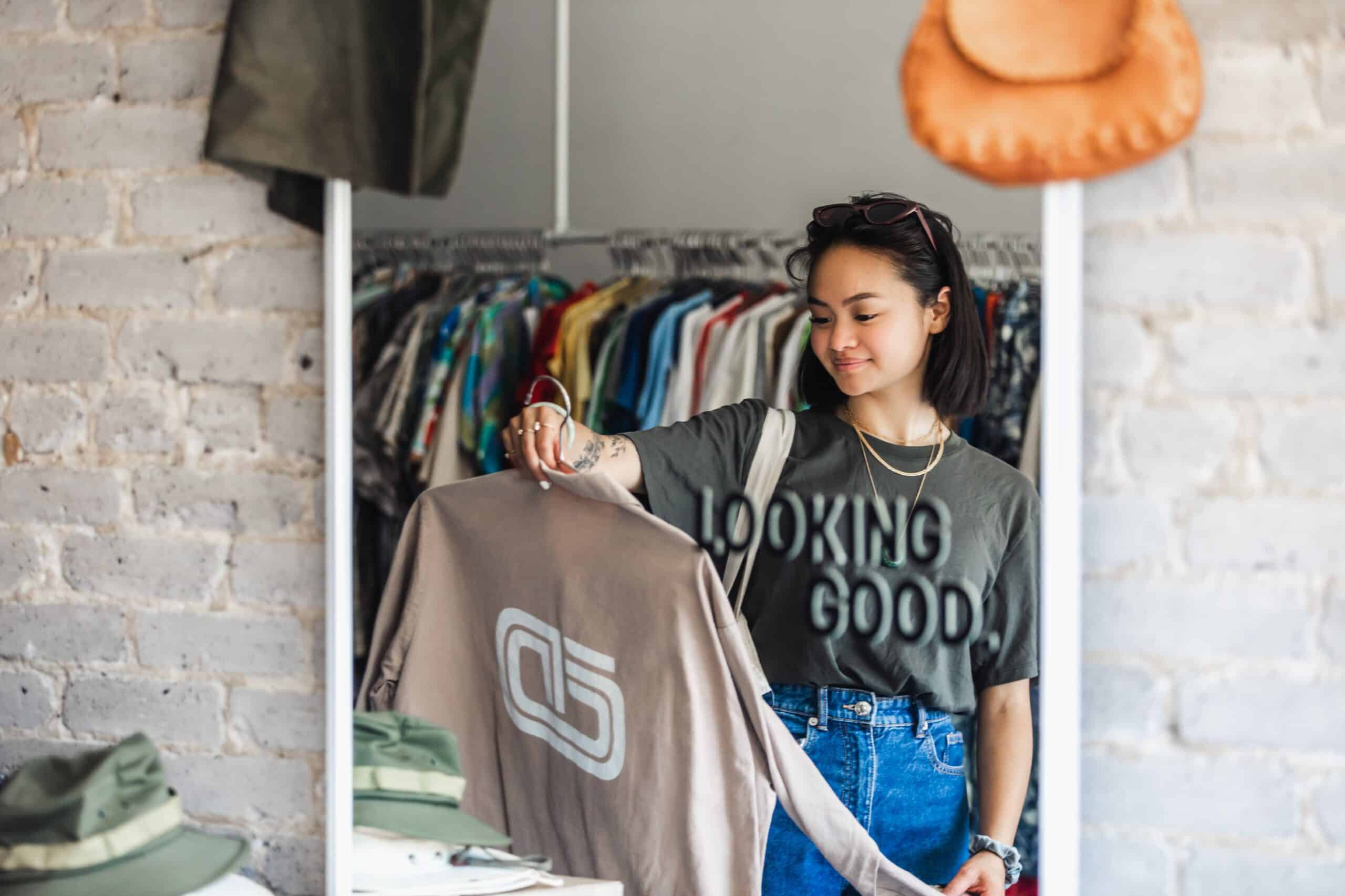There’s a storm brewing in the world of fashion retail over the issue of oversupply.
According to a recent report by the Guardian, up to 40% of all fashion products aren’t actually sold. That means up to 60 billion garments are being wasted, every single year.
It’s bad for reputation, bad for profits – and devastating for the environment.
However, it’s not an easy problem to solve.
Oversupply is caused by a number of factors, including the ever-changing trend for ‘fast fashion’, supplier requirements for minimum order quantities, and ineffective inventory planning methods, like manual spreadsheets.
Nevertheless, as the consumer voice calling for sustainability and regulation gets louder, it’s clear that urgent action is required.
“There’s likely to be a huge public backlash when people understand how much product is not sold,” predicts Francois Souchet, a circular economy and sustainability strategist.
As part of our Industry Roundtable series, we recently spoke with a handful of industry experts to explore why oversupply happens, why it’s a major problem – and what can be done about it…
Why is overproduction still such an issue in the fashion industry, and why should brands tackle it now? What’s in it for them?
“Online shopping comes with very little ramifications when customers’ decisions change. Manufacturers and brands, attempting to maximize their market share and revenues, are too willing to accept returns, creating an onslaught of challenges including reverse logistics bottlenecks.” – Dave Rolleston, Founder & CEO, The Charity Hub
“Until recently, overproduction was largely a problem for a brand’s bottom line. Now, everyone is aware of the consequences of deadstock ending up in landfill and the environmental impact of the garments being created in the first place.
So the incentive for brands to tackle deadstock are two-fold: save money and help the planet.” – Lucy Mitchell, Head of Client Services at By Association Only
“Brands have to make decisions months in advance, typically with limited information. At the end of the season, heavy discounting is used to recoup cash and finance the next season. This cycle continues, ultimately leading to overproduction. Profit is increasingly tied to sustainability, which means brands that focus on both will win.” – Daniel Parekh-Hill, CEO at Flare
“The fast fashion concept, the expected seasonality of product ranges and offerings alongside lower production costs associated with bulk orders are the key factors behind overproduction.
Having said that, there has been a visible shift in consumer values for the past few years. Sustainable practices enhance brand image, reduce excess inventory costs, and appeal to eco-conscious consumers. Embracing responsible practices is now perceived as a differentiation factor for ecommerce brands in the competitive market. It’s more and more perceived as a strategic move for long-term success.” – Susana Dias, General Manager, Juno
In an era of fast fashion, how can tech help minimize overproduction and reduce environmental impact within the industry?
“Brands that are serious about minimizing their overproduction should consider Style Arcade and Inventory Planner by Sage – tools that help brands understand customer purchase patterns, forecast demand, and provide actionable insights for companies placing their factory orders for the seasons ahead.
“The cost of such tools is negligible when you offset the savings from minimising or cutting out overproduction. Plus, we see a lot of brands embracing deadstock fabrics which can be purchased for a cheaper rate and then used to create limited-edition collections.” – Lucy Mitchell, Head of Client Services at By Association Only
Technology, particularly in the context of e-commerce, provides a unique opportunity to tackle the environmental impact of the fashion industry. By introducing something like product traceability to understand what the post-sale lifecycle of their products is, e-commerce brands are able to gather vital data around the real-world impact they are having, based on their consumers’ behaviours (beyond just top level sales metrics).” – Tom Locke, Founder, Noughts & Ones
“Implementing a robust strategic inventory software system can help manufacturers, wholesalers and retailers better forecast their needs and apply real world data to adjust to today’s rapidly evolving retail and environmental landscapes.” – Dave Rolleston, Founder & CEO, The Charity Hub
“We see technology driving sustainability in two ways: 1) Slowing over-consumption: instead of big discounting and credit purchase options, tech that allows and encourages customers to buy intentionally will help reduce excess. 2) Slowing over-production: the latest tech will increasingly help you understand your customers and their demand closer to when production decisions are being made. You’ll also be able to leverage real-time demand data from production onwards to react faster to changes in demand.” – Daniel Parekh-Hill, CEO at Flare
“There are several avenues and solutions available to e-commerce businesses that help mitigate overproduction. The main one revolves around setting up solutions that allow leveraging advanced data analytics to enable accurate demand forecasting, which helps brands produce only what is needed.
“Similarly, virtual technologies like 3D design and virtual try-ons streamline production processes, cutting down on physical prototypes and material wastage.” – Susana Dias, General Manager, Juno
Finally, the adoption of the made-to-order model and pre-orders further mitigates environmental impact. These approaches enable brands to produce garments based on actual demand, reducing excess inventory.”
E-commerce agencies play a pivotal role in shaping online retail experiences. How can they actively contribute to promoting sustainable practices and influencing consumer behavior to combat fashion’s oversupply problem?
“Education is key; agencies should not only work with technology partners to suggest suitable tech but also learn about their merchants’ businesses as a whole.
By asking the right questions agencies can better understand how to consult the brand on a wider level – not just on their website practices, development and design.” – Lucy Mitchell, Head of Client Services at By Association Only
“The role that e-commerce agencies play cannot be understated. Specifically, I believe that one of the biggest issues in the fashion industry that needs to be addressed is convenience. By implementing strategies like incentivised slower shipping, optional order grouping and less “easy” returns processes, agencies can help their clients to play their part in promoting the subject of environmental impact within their consumer community.” – Tom Locke, Founder, Noughts & Ones
“E-commerce agencies can help by working with companies that deal with the burden of reverse logistics. Ultimately, there needs to be a cost to buy 3 return 2, which is all too common. Only this will change consumer behaviour.” – Dave Rolleston, Founder & CEO, The Charity Hub
“E-commerce agencies have to take the long-term view with clients. They should ask what will position them as winners over the next 10-15 years and then guide clients to the technology that will get them there. Tech that drives both sustainability and profitability (instead of just profitability) might create fewer short-term gains in comparison to other software, but will pay off as consumer buying decisions change and sustainability regulation comes in.” – Daniel Parekh-Hill, CEO at Flare
“Through strategic partnerships and technological innovations, e-commerce agencies play a crucial role in combatting fashion’s oversupply problem and fostering a greener industry. We can encourage brands to adopt and leverage forecasting and analytics tools as well as champion eco-friendly practices by integrating transparent supply chain information on their platforms. Implementing features like carbon footprint tracking and highlighting sustainable collections helps inform consumers. E-commerce agencies can also champion the adoption of made-to-order and pre-order models, reducing overproduction.” – Susana Dias, General Manager, Juno
With the fast-paced nature of fashion and the constant demand for new trends, how can the fashion industry strike a balance between meeting consumer expectations and reducing environmental impact?
“Differentiate yourself with sustainability. It’s a competitive market. Customers are increasingly buying into sustainability, quality and value. This trend will only rise as we see more extreme weather events around us. Start with smaller volumes, create durable products or sell all year round across seasons. If you can run a supply chain without excess, not only do you show you are taking action, you save costs and can offer better prices to your customers. – Daniel Parekh-Hill, CEO at Flare
“Building sustainability into brand DNA will ensure that those values lead the way in all major decision-making processes. For fast fashion brands that are trying to reverse-engineer this practice, there will be far more challenges to overcome as customers have come to expect a certain pace for a certain price point. Making your supply chain more transparent or simply making the switch to compostable packaging would be a step in the right direction.”– Lucy Mitchell, Head of Client Services at By Association Only
“By adopting eco-friendly materials, championing fair trade, promoting repairs services, and embracing circular fashion models reduce environmental impact. Brands can leverage technology for data-driven insights to forecast trends accurately, minimising overproduction. Educating consumers on the benefits of quality over quantity and promoting timeless styles fosters a shift towards conscious consumption. Collaborative efforts between industry stakeholders, adopting slower fashion cycles, and encouraging responsible consumer choices are key to achieving a harmonious balance between meeting dynamic trends and reducing the environmental footprint of the fashion industry.” – Susana Dias, General Manager, Juno
Overcome oversupply with Brightpearl
Fashion brands use Brightpearl by Sage to accurately forecast demand and optimize stock levels. It helps them mitigate oversupply, as well as boost profitability and customer satisfaction.
Want to know more? Book a free personalized demo now.




